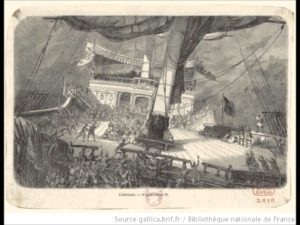
The Historic Trials & Tribulations of Meyerbeer’s ‘L’Africaine’
By David SalazarApril 28 marks the anniversary of the world premiere of Giacomo Meyerbeer’s “L’Africaine,” his final opera.
While he was a titan in his day, Meyerbeer has struggled to find footing in the modern operatic culture and many of his works, including “L’Africaine” remain obscure and unknown.
And yet there are some unique features about this work that make it a fascinating historical work of art. Let’s take a look.
- The work was originally referred to as “Vasco de Gama” by the composer but was retitled by Francois-Joseph Fétis.
- The opera made its world premiere in Paris in 1865 before heading to London in the summer of that same year. A New York premiere followed in December. It would appear at the Metropolitan Opera 26 times between 1888 and 1933. The final performance of the opera at the Met starred Rosa Ponselle and Giovanni Martinelli.
- The most famous passage of the opera is the tenor aria “O Paradis.” Enrico Caruso’s recording was a major reason for this aria retaining its popularity in the 20th century
- The opera was championed by Plácido Domingo, who performed it in San Francisco and Barcelona. The former run, which stars Shirley Verrett is widely available on home video release and remains the most famous recording of the opera.
- The work is so massive, that most modern performances cut it down to emphasize the central relationship between Vasco de Gama and Sélika.
- The work was revived in full in 2013 by the Chemnitz Opera under the original title. It was such a huge success that it won the “Rediscovery of the year” award from Opernwelt.


